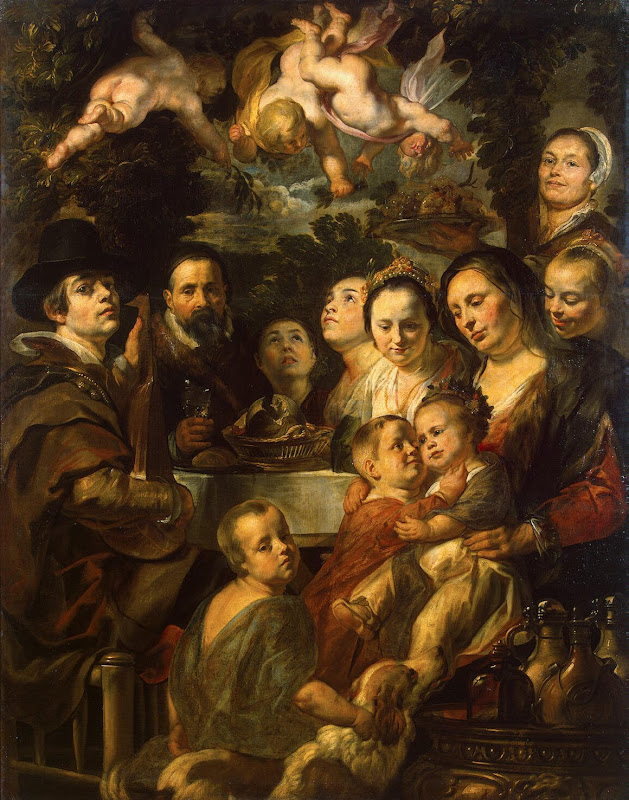Painting Detail
Self-Portrait with Parents, Brothers, and SistersArtist: Jacob Jordaens
Medium: Painting, Oil on canvas, 175x137.5 cm
Date: c. 1615
Genre: Portrait Painting
Source: Collection of Sir Robert Walpole, Houghton Hall, 1779
Jordaens depicted his family in this picture: his father Jacob Jordaens the Elder, a merchant in canvases, together with his wife Barbara van Wolshaten; himself, with a lute in his hands; and his seven brothers and sisters. In the foreground are the twins Abraham and Isaac; Elizabeth is seated on the knees of her mother; to the left of her is Maria, and to the right, cut off by the edge of the canvas, there is Catherine. The girl looking up is Anna, and next to her, in the very centre, to the left of the head of the family is Magdalena. The artist's parents had another three daughters who died in early childhood. The putti with branches of laurel in their hands hovering over the heads of the family are most likely intended to embody the souls of these deceased children who are present at the family festivities.
It is thought that the painting captures the celebration of Jordaen's entry into the Antwerp Guild of St Luke in 1615. The composition of the work is traditional for the family portrait genre, and as was customary, it takes in a variety of symbols. The lute usually was considered the embodiment of harmony and in the context of a family portrait it signifies harmony in marriage. The dog in the foreground is a symbol of conjugal fidelity, the same as the grapevine twining round the pavilion in which the relatives have gathered. The bread and wine symbolize the Eucharist, and in a broader religious sense - the faith that unites the children and parents. Jacob Jordaens's canvas is imbued with the ideals of Christian teaching. In this context the gesture of the artist's father, who is raising a goblet with wine in one hand, can be understood as a warning against excessive enticement by vain pleasures and a reminder of the need for restraint. The composition of the painting was inspired by Peter Paul Rubens's altarpiece The Circumcision.
